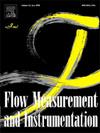Predicting gas volume fraction and flow regime identification in two-phase water–air flow: A deep learning solution for resource preservation in oil and gas industries
IF 2.7
3区 工程技术
Q2 ENGINEERING, MECHANICAL
引用次数: 0
Abstract
This study investigates the integration of gamma-ray attenuation techniques and artificial neural networks for the precise identification of flow regimes and prediction of gas volume fractions in two-phase flow. Experimental procedures were conducted within a carefully designed two-phase flow loop, which integrated gamma-ray attenuation techniques with sophisticated data acquisition systems. An in-depth analysis was undertaken utilizing convolutional neural networks, a subtype of artificial neural networks, to analyze detailed patterns in the data and predict gas volume fraction alongside identifying flow regimes. The convolutional neural network model was precisely trained and optimized to handle the complexities inherent in multiphase flow dynamics. The results demonstrated the stability and efficacy of the convolutional neural network model in accurately predicting gas volume fraction and evaluating flow regimes, while also exploring the relationship between radiation measurement techniques and advanced machine learning methods. This comprehensive approach not only advances the current understanding of multiphase flow dynamics but also offers practical solutions for enhancing measurement accuracy and efficiency in industrial applications.
预测两相水-气流动中的气体体积分数和流态识别:油气行业资源保护的深度学习解决方案
本研究探讨了伽马射线衰减技术和人工神经网络的集成,以精确识别两相流的流动形式和预测气体体积分数。实验过程在精心设计的两相流环路中进行,该环路将伽马射线衰减技术与复杂的数据采集系统相结合。利用卷积神经网络(人工神经网络的一种亚型)进行了深入分析,分析了数据中的详细模式,并预测了气体体积分数,同时确定了流动状态。对卷积神经网络模型进行了精确的训练和优化,以处理多相流动力学中固有的复杂性。结果证明了卷积神经网络模型在准确预测气体体积分数和评估流动状态方面的稳定性和有效性,同时也探索了辐射测量技术与先进机器学习方法之间的关系。这种全面的方法不仅促进了目前对多相流动力学的理解,而且为提高工业应用中的测量精度和效率提供了实用的解决方案。
本文章由计算机程序翻译,如有差异,请以英文原文为准。
求助全文
约1分钟内获得全文
求助全文
来源期刊

Flow Measurement and Instrumentation
工程技术-工程:机械
CiteScore
4.30
自引率
13.60%
发文量
123
审稿时长
6 months
期刊介绍:
Flow Measurement and Instrumentation is dedicated to disseminating the latest research results on all aspects of flow measurement, in both closed conduits and open channels. The design of flow measurement systems involves a wide variety of multidisciplinary activities including modelling the flow sensor, the fluid flow and the sensor/fluid interactions through the use of computation techniques; the development of advanced transducer systems and their associated signal processing and the laboratory and field assessment of the overall system under ideal and disturbed conditions.
FMI is the essential forum for critical information exchange, and contributions are particularly encouraged in the following areas of interest:
Modelling: the application of mathematical and computational modelling to the interaction of fluid dynamics with flowmeters, including flowmeter behaviour, improved flowmeter design and installation problems. Application of CAD/CAE techniques to flowmeter modelling are eligible.
Design and development: the detailed design of the flowmeter head and/or signal processing aspects of novel flowmeters. Emphasis is given to papers identifying new sensor configurations, multisensor flow measurement systems, non-intrusive flow metering techniques and the application of microelectronic techniques in smart or intelligent systems.
Calibration techniques: including descriptions of new or existing calibration facilities and techniques, calibration data from different flowmeter types, and calibration intercomparison data from different laboratories.
Installation effect data: dealing with the effects of non-ideal flow conditions on flowmeters. Papers combining a theoretical understanding of flowmeter behaviour with experimental work are particularly welcome.
 求助内容:
求助内容: 应助结果提醒方式:
应助结果提醒方式:


